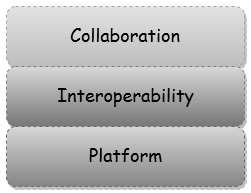
- SharePoint - Home
- SharePoint - Overview
- SharePoint - Types
- SharePoint - Capabilities
- SharePoint - Setup Environment
- SharePoint - Create Site Collection
- SharePoint - APIs
- SharePoint - Central Administration
- SharePoint - App Model
- SharePoint - Integration Options
- SharePoint - Development Tools
- SharePoint - List Functionality
- Additional List Functionality
- SharePoint - Custom List
- SharePoint - Libraries
- SharePoint - Web Part
- Site Column & Content Types
- SharePoint - Data
- SharePoint - Server Object Model
- SharePoint - Client Object Model
- SharePoint - REST APIs
- SharePoint - Features & Elements
- SharePoint - Feature\Event Receiver
- SharePoint - Azure Platform
- SharePoint - Packaging & Deploying
- SharePoint - Sandbox Solutions
- SharePoint - Apps
SharePoint - Overview
This tutorial will give you an idea of how to get started with SharePoint development. Microsoft SharePoint is a browser-based collaboration, document management platform and content management system. After completing this tutorial, you will have a better understating of what SharePoint is and what are the high-level feature areas and functionalities of SharePoint.
What is SharePoint
SharePoint is a platform to support collaboration and content management system. It is a central web-based portal. Using SharePoint, you can manage your colleagues and your own documents, social activities, data, and information.
It allows groups to set up a centralized, password-protected space for document sharing.
Documents can be stored, downloaded and edited, then uploaded for continued sharing.
SharePoint offers such a wide array of features that it is very challenging for any one person to be an expert across all the workloads.
Let us understand what all can we do with SharePoint. It is divided into three separate areas −

Collaboration
The term collaboration contains a very strong theme for SharePoint. It means bringing people together through different types of collaboration, such as enterprise content management, Web content management, social computing, discoverability of people and their skills.
In SharePoint 2013, collaboration is managed through Apps.
Developers can extend, customize, or build their own Apps for SharePoint as well manage collaboration on SharePoint.
Interoperability
SharePoint is also about bringing this collaboration together through interoperability such as −
Office and web-based document integration.
Capability to build and deploy secure and custom solutions that integrate line-ofbusiness data with SharePoint and Office.
Integrating with wider web technologies, or deploying applications to the cloud.
Platform
SharePoint is also a platform that supports not only interoperability and collaboration but also extensibility, through a rich object model, a solid set of developer tools, and a growing developer community.
One of the key paradigm shifts is the notion of the cloud in SharePoint.
-
The cloud introduces new App models such as −
New ways of developing, deploying, and hosting SharePoint applications.
New forms of authentication through OAuth.
New ways of data interoperability using OData and REST.